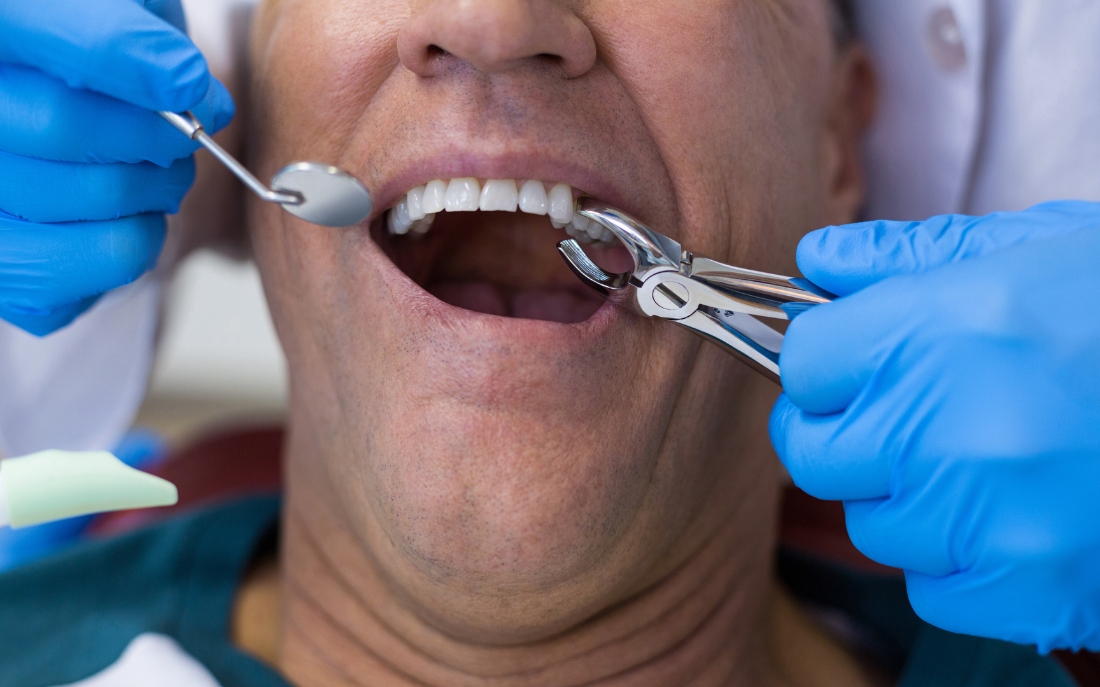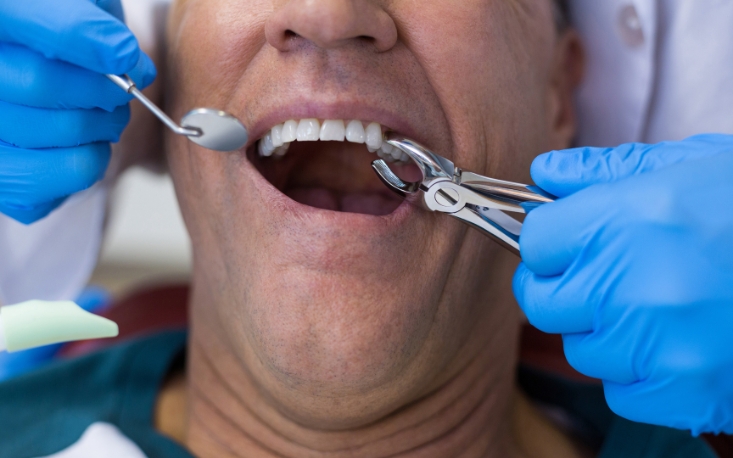How long after extraction should you get implants?


Losing a tooth can be a jarring experience, leaving many people wondering what comes next. If you’re considering dental implants, the timing of the procedure is crucial to achieving the best results. Should you get the implant right after the extraction, or is it better to wait? The answer isn’t always straightforward and depends on several factors unique to each individual. Understanding these factors can help you make an informed decision that not only restores your smile but also ensures long-term oral health. Dive into this blog to discover the optimal timing for getting dental implants and what you need to know to make the best choice for your situation.
Understanding the Right Timing for Dental Implants After Tooth Extraction
Deciding when to get dental implants after a tooth extraction is a common concern for many patients. The timing can significantly impact the success of the implant and overall oral health. While some might think it’s best to rush into the procedure, others may wonder if they should wait to let their mouth heal completely. The truth lies somewhere in between, as various factors play into the ideal timing for dental implants. Understanding these elements will help you make an informed decision that aligns with your health needs and lifestyle.
Factors Influencing the Timing of Dental Implants
Several factors influence the decision of when to place dental implants after tooth extraction. These factors are crucial in determining whether immediate implantation or a delayed approach is the best route.
1. Condition of the Extraction Site
The condition of the extraction site is one of the most critical factors in deciding when to get dental implants. If the tooth was removed due to infection or periodontal disease, it might be necessary to allow the area to heal completely before proceeding with the implant. In such cases, the dentist might recommend waiting a few months to ensure that the site is free of any lingering infection or inflammation. On the other hand, if the extraction was straightforward and the surrounding bone and gum tissue are healthy, an immediate implant may be possible.
2. Bone Health and Density
Bone health plays a pivotal role in the success of dental implants. The implant needs a solid and sufficient bone structure to anchor securely. If the bone is thin or deteriorating, immediate implantation might not be ideal. In such scenarios, bone grafting could be necessary to build up the bone before placing the implant. This process requires additional healing time, potentially delaying the implant procedure by several months. However, in cases where the bone is dense and healthy, the implant might be placed immediately after the extraction, provided other conditions are favorable.
3. Overall Health and Healing Ability
A patient’s overall health and healing ability are also vital considerations. Conditions like diabetes, smoking, or autoimmune diseases can affect healing times and the success rate of implants. Patients with these conditions might need to wait longer before getting implants to ensure that their body has healed sufficiently from the extraction. Additionally, medications that affect bone density, such as certain osteoporosis drugs, could also influence the timing of the procedure.
Immediate Implant Placement: Benefits and Considerations
Immediate implant placement refers to placing a dental implant right after tooth extraction. This approach has gained popularity due to its potential benefits, but it also comes with specific considerations.
Benefits of Immediate Implant Placement
One of the most significant advantages of immediate implant placement is the reduced overall treatment time. Since the implant is placed during the same appointment as the extraction, it eliminates the need for a separate surgery later on. This approach can also help preserve the bone at the extraction site, preventing the natural bone loss that occurs after tooth removal. Immediate implantation can be a convenient option for patients, as it reduces the number of dental visits and accelerates the process of getting a permanent tooth replacement.
Considerations and Potential Risks
However, not all patients are candidates for immediate implant placement. The success of this procedure depends heavily on the condition of the bone and the absence of infection. If the bone is too weak or there is significant infection present, the implant might fail to integrate properly, leading to complications. Additionally, immediate implantation requires precise surgical skills and experience from the dental professional. Patients must consult with a highly skilled implant dentist to determine if this option is suitable for them.
Delayed Implant Placement: When Waiting Is the Better Option
Delayed implant placement involves waiting for a period after tooth extraction before placing the implant. This method is often chosen for patients who require additional healing time or bone augmentation.
Why Delay the Implant Procedure?
There are several reasons why delayed implant placement might be recommended. If the extraction site has been affected by infection, allowing time for the area to heal fully can lead to a more successful implant outcome. Bone grafting procedures also necessitate a waiting period to ensure that the graft has integrated with the natural bone, providing a solid foundation for the implant. Additionally, delaying the implant allows the gum tissue to heal, which can result in a more aesthetically pleasing outcome when the final restoration is placed.
How Long Should You Wait?
The waiting period for delayed implants can vary depending on the individual case. Generally, dentists recommend waiting three to six months after tooth extraction before placing the implant. This timeline allows for adequate bone healing and reduces the risk of complications. However, some cases may require a longer waiting period, especially if extensive bone grafting or other preparatory procedures have been performed. The key is to follow your dentist’s recommendations and allow your mouth to heal properly before moving forward with the implant.
The Role of Bone Grafting in Implant Timing
Bone grafting is often necessary for patients who do not have sufficient bone to support a dental implant. Understanding the role of bone grafting can help you anticipate the timeline for your implant procedure.
Why Bone Grafting May Be Necessary
Bone grafting is used to augment or rebuild bone in areas where it has been lost or is insufficient to support an implant. This procedure is common for patients who have experienced bone loss due to periodontal disease, trauma, or long-term tooth loss. Without adequate bone, the implant cannot be securely anchored, increasing the risk of implant failure. Bone grafting helps create a solid foundation for the implant, ensuring its long-term success.
Timing of Implants After Bone Grafting
After bone grafting, the grafted material needs time to integrate with the existing bone. This process, known as osseointegration, can take several months. Typically, Greer dentists recommend waiting four to six months after bone grafting before placing the implant. This waiting period ensures that the bone is strong enough to support the implant and reduces the risk of complications. In some cases, where only minor grafting is needed, the waiting period may be shorter.
The Importance of Personalized Treatment Plans
Each patient’s dental health and needs are unique, which is why a personalized treatment plan is crucial when considering dental implants after extraction. Factors like the number of missing teeth, the condition of your oral health, and your long-term goals all influence the timing and approach to your implant procedure.
Tailoring the Treatment to Your Needs
A one-size-fits-all approach does not work when it comes to dental implants. Your dentist will consider various factors, such as the health of your gums, the density of your bone, and any underlying medical conditions, to create a treatment plan that suits your specific needs. This personalized approach ensures that you receive the most appropriate care, leading to better outcomes and a higher success rate for your implants.
Ongoing Monitoring and Adjustments
Even after the initial treatment plan is created, ongoing monitoring is essential. Your dentist will assess how well your mouth is healing and whether any adjustments to the plan are necessary. For example, if you heal more quickly than expected, the timeline for your implant placement may be moved up. Conversely, if complications arise, your dentist may recommend additional procedures or a longer waiting period. Regular check-ups and open communication with your dentist are key to a successful implant journey.
Making an Informed Decision About Dental Implants
Deciding when to get dental implants after a tooth extraction is a significant decision that requires careful consideration of various factors. Understanding the pros and cons of immediate versus delayed implant placement, the role of bone health, and the importance of a personalized treatment plan will help you make an informed choice.
Consulting with a Dental Professional
The best way to determine the right timing for your dental implant is to consult with a skilled dental professional. During your consultation, your dentist will evaluate your oral health, discuss your options, and help you understand the potential risks and benefits of each approach. This collaborative process ensures that you are fully informed and confident in your decision.
Planning for Long-Term Success
Dental implants are a long-term investment in your oral health, so it’s essential to plan carefully. By choosing the right timing and working with an experienced dentist, you can achieve a successful outcome that enhances both your oral health and your quality of life. Whether you opt for immediate or delayed implants, the key is to follow your dentist’s recommendations and take the necessary steps to ensure a smooth and successful procedure.
Achieving the Best Outcome for Your Dental Implants
Getting dental implants after a tooth extraction is a multi-step process that requires careful planning and consideration. By understanding the factors that influence timing and working closely with your dentist, you can achieve the best possible outcome. Whether you choose immediate or delayed implantation, the goal is to ensure that your dental implant is securely anchored and that your oral health is optimized for long-term success.
As you consider your options, remember that the key to a successful dental implant lies in the timing and the quality of care you receive. With the right approach, you can look forward to a healthy, beautiful smile that lasts a lifetime.
In conclusion, making the right decision on when to get dental implants after a tooth extraction can greatly impact the outcome of the procedure. If you’re in Greer, SC, consult with your dentist to discuss your unique situation and receive personalized advice. Proper planning and care will help ensure that your dental implant is a success. Don’t forget to ask about the optimal timing based on your specific needs, whether you’re dealing with multiple extractions or just one. This consideration is especially important if you’re also planning to undergo a tooth extraction in Greer, SC.
Taking the Next Steps Toward Dental Implants
Now that you’re equipped with the knowledge of when to get dental implants after extraction, it’s time to take the next step. Reach out to a trusted dental professional in your area and begin the journey toward restoring your smile. With the right timing and expert care, you can look forward to a lifetime of healthy, confident smiles.
Make sure to consider all the factors and consult with your dentist to ensure that your implant journey is smooth and successful. Whether you need additional procedures like bone grafting or are ready for immediate implantation, the key is to stay informed and proactive in your dental care. By doing so, you’ll be well on your way to achieving the best possible outcome for your dental health.
